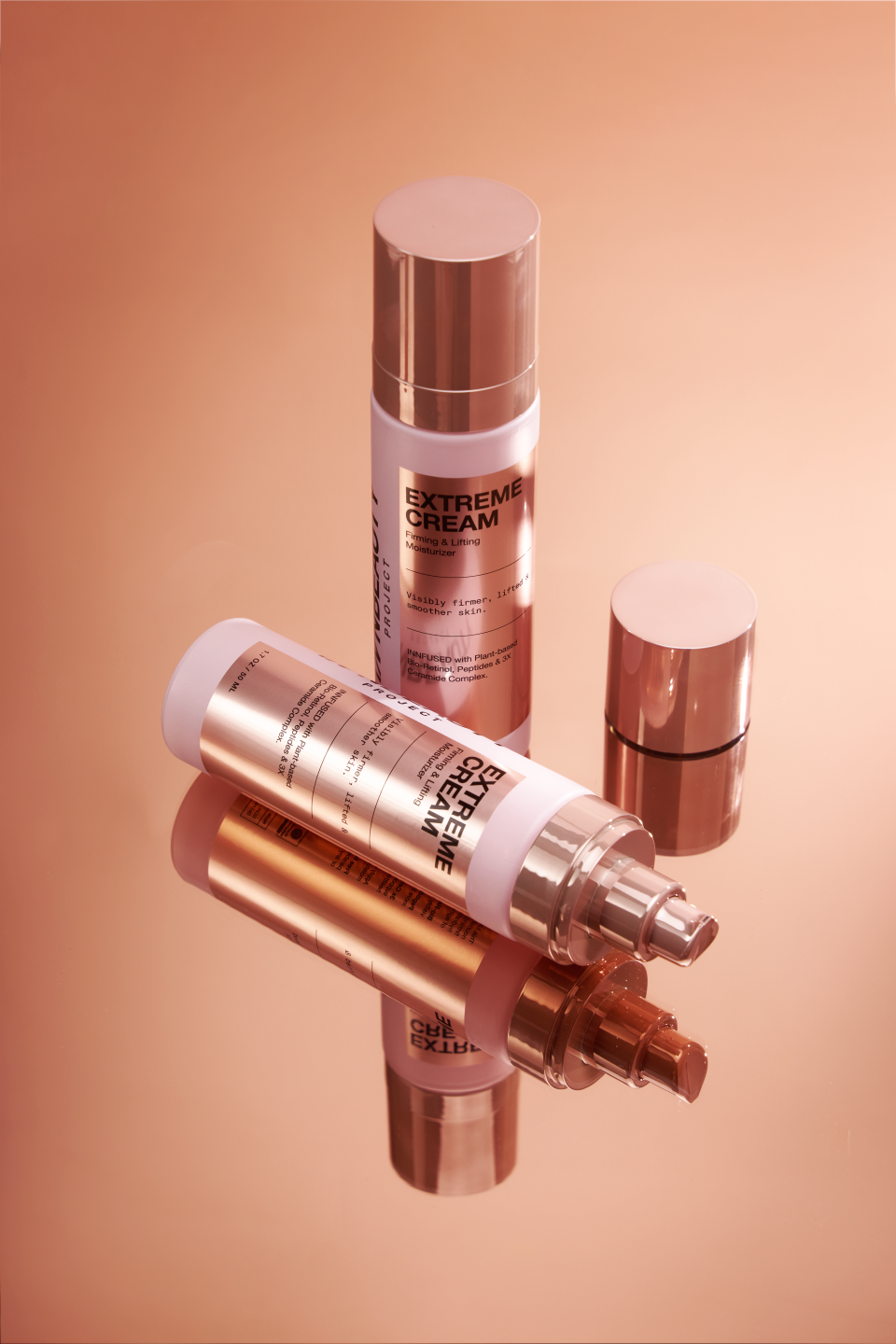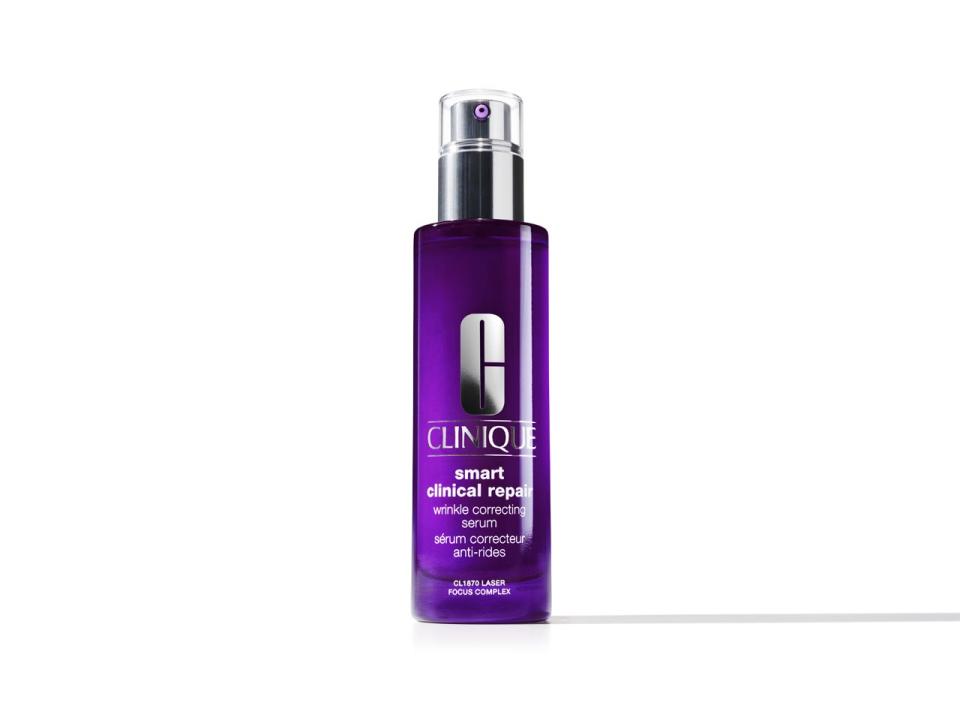What Will Beauty’s Era of Transparency Mean for the State of Clinical Testing?

When InnBeauty Project — a rising star in Gen Z skin care since the brand’s launch in 2019 — decided to inaugurate its first antiaging product this January, cofounders Jen Shane and Alisa Metzger knew they needed to somehow up the ante in order to adequately stake their claim in a new category.
“We wanted to show, not tell, the consumer why our product was different,” said Metzger of Extreme Cream, which retails for $48 and aims to address fine lines and wrinkles with a formula that includes 7 percent lifting peptides, 2 percent bio-retinol and ceramides. Sold at Sephora, the product is up against more established — and generally pricier — antiaging offerings by brands like Skinceuticals, Kiehl’s, Dr. Barbara Sturm and the like.
More from WWD
Jessica Alba to Step Down as Chief Creative Officer of The Honest Co.
L'Occitane Suspends Trading in Shares in Advance of Takeover Announcement
InnBeauty’s solution? To double down on clinical testing with a budget of $102,000 — roughly seven times that of any previous launch by the brand, which projects to reach $50 million in retail sales this year — to prove the product’s claims.
“We wanted to put our product up against any $200, $300, $500 alternative on the market and have the data points to show it can perform just as well,” said Shane.

So the pair upgraded the product’s Repeat Insult Patch Testing panel from the typical 50-ish panelists to 200 in order to further back its sensitive skin-safe and hypoallergenic claims, and harnessed confocal imaging for the first time via VivaScope 1500 to assess the cream’s ability to visibly increase skin elasticity and hydration at a cellular level. This is in addition to the brand’s standard microbial, non-comedogenic and freeze-thaw tests, plus consumer perception studies.
Since launching, the product has reigned as InnBeauty’s top-performer at Sephora — previous launches have typically held the spot for one to two months — with Metzger foreseeing Extreme Cream will “continue to hold the top spot for the long haul,” in part due to this increased investment in clinicals, the results of which have been extensively leveraged to more compellingly market the product both online and in Sephora stores.
“As a younger brand you have to be very scrappy with your budget, and clinical testing gets quite expensive. We’re happy to now be able to do it at the level that we want ” said Shane, adding that the brand is investing roughly the same amount into clinicals for Extreme Cream’s “sister product,” launching in May.
Claims and clinical trials have always been an arms race in skin care, but as consumer demands for industry transparency rise, a cohort of brands, like InnBeauty, are becoming more pointed — in both methodology and marketing — when it comes to clinicals.
“[Clinical testing] is becoming this ‘checkpoint,’ so to speak, among results-oriented consumers who want to see brands that have backup and validation for the claims they’re making,” said cosmetics chemist and BeautyStat founder Ron Robinson.
The case for clear and accurate claims goes beyond brownie points, though, as evidenced by an emerging crop of class action lawsuits against brands like Grande Cosmetics and Nutrafol, both for what plaintiffs deemed to be misleading marketing tactics.
Though the brand admitted no wrongdoing, Grande Cosmetics agreed in January to pay $6.25 million to settle a lawsuit claiming the brand did not adequately disclose the presence of isopropyl cloprostenate — which may pose adverse effects — in its products. Nutrafol, meanwhile, is facing multiple class action lawsuits — including two which were filed last May and June in New York, respectively — alleging that inconsistencies in the brand’s clinical trials in terms of panelist diversity and root cause of hair loss make the labeling of its supplements as “clinically proven” deceptive.
While certain parameters around what clinical testing should look like are relatively widely agreed upon — panels consisting of at least 30 people; trials conducted by independent, third-party labs — much else about the process remains laissez-faire, including panelist diversity commensurate with that of the general population, which ideally would be table stakes at this point, and even the context in which the word “clinical” can be used and marketed.
Without any sort of government-regulated standard practice for clinical testing, “the onus is on brands to substantiate their claims,” said Ronie Schmelz, partner at K&L Gates, who posits that unlike with drug claims, for which the need to demonstrate safety and efficacy is a non-negotiable, “dictating how cosmetics companies should go about substantiating those claims isn’t something the FDA wants — or necessarily needs — to get involved in.”
Getting the industry on the same page when it comes to accurate and separate labeling of consumer perception study claims (which are subjective) versus clinical claims (which are expert graded and thus objective), however, could be a lower-barrier step toward more honest messaging.
“It’s a one-two punch; there are certain claims you should absolutely make sure you measure clinically if you are going to make,” said Jennifer Stansbury, cofounder of The Benchmarking Company, adding that because consumer perception studies tend to garner higher and thus potentially more persuasive percentages (i.e. “95 percent of consumers agree…”), a brand can “always lead with the higher [consumer perception] number, followed by the clinical claim to supports that moisturization, or whatever it may be, actually is occurring.”
Clinique, whose differentiator upon its founding in 1968 was its status as a dermatologist-led brand long before dermatologist-led brands became trendy, is thinking today about how to honor its heritage while continuously evolving its approach.
That objective that has led the brand to routinely conduct new clinical trials among its existing assortment in an aim to resonate with emerging consumer needs — for example, deeming its 1968-launched Dramatically Different Moisturizing Lotion safe for use after intense pulsed light therapy (IPL) in a two-week clinical test.
“That’s a product that’s been around for a long time, and yet it has one of the most modern claims you could possibly look for,” said Christie Sclater, senior vice president of global product marketing, insights and analytics and omnichannel education at Clinique. “We see the growth in aesthetic procedures, and there’s this element of, how do we continue to modernize the storytelling for our consumers through new test claims that will resonate.”

Part of that also means demonstrating how Clinque’s topical offerings can measure up to certain skin-boosting aesthetic treatments. At last month’s American Academy of Dermatology conference in California, the brand unveiled to attendees a recent clinical test for its Smart Clinical Repair Wrinkle Correcting Serum, $76, which indicated that women who used the serum twice daily for 16 weeks showed “the same improvement” to “the overall look of fine lines and wrinkles” as another group who underwent one Deka dot SmartSkin CO2 laser treatment.
The brand is striving to bring a clinical approach to its makeup portfolio now as well, introducing its “Eye Safety Promise” in tandem with the launch of its New York High-fi Mascara last August. In partnership with the brand’s first guiding ophthalmologist, Dr. Ashley Brissette, each of Clinique’s eye makeup products are now ophthalmologist-tested and deemed safe for sensitive eyes and contact lens wearers.
“Eye safety is something we’ve just barely started to dial in on, and we’re going to be turning up the volume there quite a bit,” said Sclater.
A very different, but similarly unconventional kind of clinical test informed the genesis of beauty veteran Liz Whitman’s Exponent Beauty, which was founded in 2019 and features dosed-out product systems, each consisting of a powdered active (retinol, vitamin C and the like) and its hydrator counterpart, which, mixed together, aim to create a potent serum.

In developing her debut Brightening Boost Vitamin C Power Serum, $98 for 30 doses, Whitman “sent popular vitamin C products to [Essex Testing Clinic in New Jersey] and asked them to test the concentration of the active each day from Day One to Day 60 while opening it every day — essentially mimicking a consumer actually using the serum dropper bottle at home,” Whitman said.
The lab’s finding: Most of the products lost up to half of their potency over the course of the period, hence Whitman’s aim of combating potency degradation with activated serums that pack a punch for 30, 45, or however many doses a consumer opts to purchase.
“Consumers shouldn’t have to be investigative journalists,” Whitman said. “There isn’t an apples-to-apples comparison across brands, but we need to create credible ways for consumers to understand the performance of their products.”
Best of WWD


